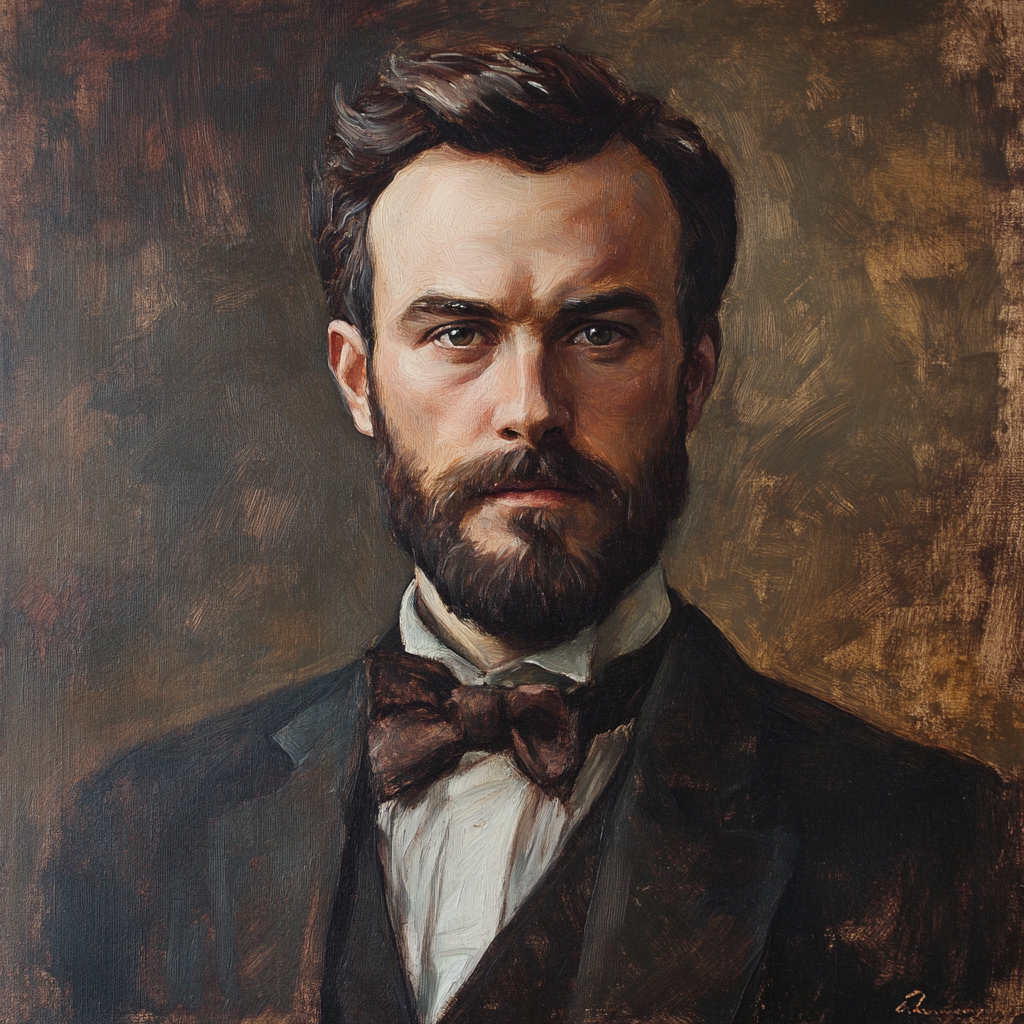John Calhoun Clemson was President of the Union of American States from 1888 to 1899.
The Presidency of John Calhoun Clemson (1888-1899): Corruption, Decline, and the Fall of Civilian Rule
1888: The Accession of John Calhoun Clemson
John Calhoun Clemson, the grandson of John C. Calhoun and son of Thomas Green Clemson, assumed power after his father’s death in 1888.
Despite his lineage, he lacked the political acumen and ruthlessness of his predecessors. His rule was characterized by corruption, incompetence, and internal aristocratic rivalries.
- Unlike Thomas Green Clemson, who maintained firm control over the Planter Council, John Calhoun Clemson was easily manipulated by powerful aristocrats.
- He expanded personal luxuries rather than focusing on governance, using state funds to build lavish palaces, host extravagant feasts, and maintain an excessive personal guard.
- The Planter Council grew increasingly divided, as competing factions sought to influence the weak president or remove him outright.
By the early 1890s, political instability had become rampant.
1889-1895: The Deepening of Economic and Social Decline
With John Calhoun Clemson more interested in personal wealth than governance, the Union’s internal stability eroded rapidly.
- The economy stagnated, as the Union’s reliance on enslaved and indentured labor became an economic burden rather than an advantage.
- Black market slave trading increased, as independent factions operated beyond state control.
- Infrastructure crumbled, with rail networks and industrial centers falling into disrepair.
- Corruption ran unchecked, with high-ranking aristocrats and officials embezzling state funds.
Despite these warning signs, Clemson took no meaningful action. Instead, he continued to host lavish events while his generals and bureaucrats ran the government unchecked.
Meanwhile, the military, long sidelined under aristocratic rule, began growing restless.
1895-1899: Rising Unrest & the Path to Military Intervention
By the mid-1890s, the Planter Council had effectively collapsed, leaving the country in an ungovernable state.
- Workers, overseers, and even minor aristocrats began to rebel, frustrated with worsening economic conditions.
- Local militias, once under aristocratic control, began operating independently, threatening internal security.
- The military, still one of the most organized institutions in the Union, viewed Clemson’s rule as a disaster.
In 1899, Colonel Barnaby Alloicious Clarke, Jr., a high-ranking military officer, led a coup against Clemson.
- Clarke’s forces stormed the presidential estate in Arlington, arresting and publicly executing John Calhoun Clemson.
- The Planter Council was formally dissolved, ending civilian rule in the Union.
- Clarke declared martial law, establishing the first military junta in Union history.
Legacy of John Calhoun Clemson (1888-1899)
- Oversaw one of the most corrupt and incompetent regimes in Union history.
- Allowed the economy to collapse due to negligence and embezzlement.
- Failed to control the Planter Council, leading to infighting and the collapse of civilian rule.
- Was overthrown and executed in the 1899 military coup, marking the end of aristocratic government in the Union.
His rule is remembered as a cautionary tale—not for its brutality, but for its sheer incompetence and self-destruction.

